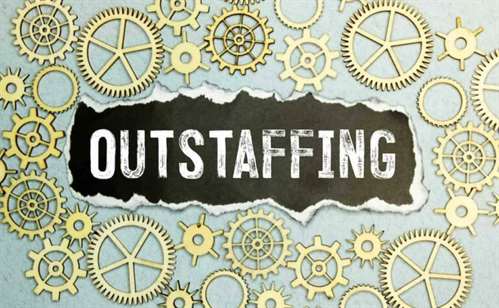18 Jan CI CD A Guide to Maturity Continuous Integration is a development by Ryan Krull Standard Bank Engineering
Content
Cloud services and CD automation simplify the task to create and manage redundant environments for production, beta and developer code. New releases nondisruptively roll into production after a suitable testing cycle with the help of parallel setups. The automation phase, the third level of DevOps maturity, involves more automation to perform essential tasks. DevOps is not just continuous integration and continuous delivery (CI/CD) but a much broader strategy.
We see DevOps as a lifecycle with each phase flowing into the other to break down silos and inform key stakeholders along the way. You plan the work, then build it, continuously integrate it, deploy it, finally support the end product and provide feedback back into the system. Building an automated delivery pipeline doesn’t have to happen overnight. Start small, by writing tests for every bit of new code, and iterate from there.
Infrastructure as Code
Level 4 of the model sees the most advanced organizations build on the three levels above to achieve multiple daily code releases to multiple reliable production environments. Security is no longer a specific domain or team, and its processes and tools are embedded throughout the lifecycle. Very high levels of automation are the hallmark of full adoption of DevSecOps, with threat modeling and assessment, code validation, testing, code scanning, and deployment all highly automated. Infrastructure as code is the expectation, and platforms scale automatically utilizing multiple cloud service providers.

One of the major impediments in any organization’s DevOps transition is the outlook of using it as a goal or a destination. Selecting the right DevOps services can make all the difference in this area, and that’s where the DevOps Maturity Model comes into play. MTTR will assess your efficiency in the impact of how you prioritize and fix problems. It is the measure of the average recovery time from failure to resolution and helps provide key insights in to user experience and their access to the software product. Return on Investment is always important to demonstrate for budgetary and efficiency stakeholders.
Amplify feedback for faster resolution
A maturity model describes milestones on the path of improvement for a particular type of process. In the IT world, the best known of these is the capability maturity model , a five-level evolutionary path of increasingly organized and systematically more mature software development processes. We’ve put together a high-level CI / CD Maturity guide to help with these challenges.
- If you correlate test coverage with change traceability you can start practicing risk based testing for better value of manual exploratory testing.
- Verifying expected business value of changes becomes more natural when the organization, culture and tooling has reached a certain maturity level and feedback of relevant business metrics is fast and accessible.
- Made process changes to test and run database migrations in lower environments before running them in production.
- In this way, they can identify the minimum viable product for each feature.
- They’ve created a process that “works for them” and lack people with the vision or political power to spur them onto more advanced steps.
Multiple backlogs are naturally consolidated into one per team and basic agile methods are adopted which gives stronger teams that share the pain when bad things happen. A DevSecOps maturity model enables organizations to establish where they are on their journey to DevSecOps, assess their progress toward the ultimate goal, and identify next steps to achieve their objectives. Sincequite a lot of ML projects fail to go to production, MLOps is tooling, processes, and best practices to avoid that fate. Chaos Engineering – Chaos engineering is the practice of experimenting on a system to test it’s resiliency and is driven by the certainty that a system; at some point, will fail. This is especially true with the uncertainty introduced by the rapid and frequent releases of DevOps.
Even though most firms have implemented DevOps to some extent in their software development processes, many of them are yet to unlock the full potential of DevOps. Being at this level can also lead to a feeling of frustration, as technical teams have far more metric data than management. That data might be difficult to access or challenging for management to understand, meaning that they make decisions organizational telemetry suggests will be worse for the business. Continuous improvement is a company cornerstone, and employees in every part of the engineering organization regularly identify new areas for improvement. The problem with their definition is that it’s binary, and it’s simplistic.
Reach DevSecOps Maturity with CloudGuard
This gives management crucial information to make good decisions on how to adjust the process and optimize for e.g. flow and capacity. At the base level in this category it is important to establish some baseline metric for the current process, so you can start to measure and track. At this level reporting is typically done manually and on-demand by individuals.

The continuous delivery maturity model lays out the five increasingly intense — and capable — levels of the process. By this point, compliance and quality assurance are so built into the development process that they sign off on code shortly after it’s written. An extensive, high-quality suite of tests means that deployments happen very soon after code has been finished. Organizations at this level will often deploy code multiple times per day. That’s in contrast to teams at level 1, who deploy once or twice per quarter.
Business leaders now have begun to embrace the fact that there is a new way of thinking about software development. IT can once again start pushing innovation instead of restraining it by expensive, slow, unpredictable and outdated processes. There are many ways to enter this new era and here we will describe a structured approach to attaining the best results. While agile methodologies often are described to best grow from inside the organization we have found that this approach also has limitations.
OWASP Devsecops Maturity Model
Wants to change the way we look at systems development today, moving it to the next level where we focus more time on developing features than doing manually repetitive tasks. Where we visualize and understand the path from idea to where it is released and brings business value. Expert practices will include zero touch continuous deployment to production where every commit can potentially make it all the way to production automatically.
The Continuous Delivery Maturity Model – InfoQ.com
The Continuous Delivery Maturity Model.
Posted: Wed, 06 Feb 2013 08:00:00 GMT [source]
However, the extent and evolution of DevOps have a direct bearing on organizations’ ability to tap into their full potential. Transforming and maturing your DevOps processes is an investment and can be a massive undertaking with consideration to where you currently are in your software development lifecycle. You may need to go as far as a rework your communication plan to changing the way in which you train members of your team. To measure success at any stage, establish benchmarks for performance and make sure that they are transparent to all relevant stakeholders. Then define the work to be done, measure success and you are then working toward securing the success in maturation of your DevOps processes. At this advanced level, teams also tackle harder deployment problems, such as multi-tier applications in which several components must deploy together, but are on different release cycles.
Apart from information directly used to fulfill business requirements by developing and releasing features, it is also important to have access to information needed to measure the process itself and continuously improve it. At this stage it might also become necessary to scale out the build to multiple machines for parallel processing and for specific target environments. ci cd maturity model Techniques for zero downtime deploys can be important to include in the automated process to gain better flexibility and to reduce risk and cost when releasing. At this level you might also explore techniques to automate the trailing part of more complex database changes and database migrations to completely avoid manual routines for database updates.
Continuous Testing (CI/CD)
That is because shared information and processes for the development, operations, and security teams are compulsory to acquire DevOps maturity. A team at this level should look at each facet of DevOps maturity and seek to improve incrementally. The best place to start is to recognize the team’s strengths and weaknesses as it pertains to continuous improvement. By adopting a more focused attitude and structured process for continuous improvement, teams will recognize that they can improve each of the other facets incrementally and independently. A typical organization will have one or more legacy systems of monolithic nature in terms of development, build and release. A typical organization will have, at base level, started to prioritize work in backlogs, have some process defined which is rudimentarily documented and developers are practicing frequent commits into version control.

The operations team continues to work to fully automate their continuous integration pipeline, ironing out every need for manual intervention. Level 1 of DevOps maturity is for teams who are just beginning to test the waters of DevOps. That doesn’t mean that they’re immature engineering organizations. Instead, their processes are usually static and familiar, but they might not be serving the organization well. Teams at this level will regularly experience projects that go way over time and budget.
Testing is without doubt very important for any software development operation and is an absolutely crucial part of a successful implementation of Continuous Delivery. Similar to Build & Deploy, maturity in this category will involve tools and automation. However, it is also important to constantly increase the test-coverage of the application to build up the confidence in speed with frequent releases.
Data Visualization (ML4Devs Newsletter, Issue
Service Mesh – A service mesh is a dedicated infrastructure layer for aiding inter-service communications between microservices. A service mesh improves the collaboration between development and operations by providing a centralized place to manage microservices at runtime. This enables developers to focus on the code, while operations focus on the underlying infrastructure. This results in an environment that is more resilient, scalable, and secure.
Tagging and versioning of builds is automated and the deployment process is standardized over all environments. Built artifacts or release packages are built only once and are designed to be able to be deployed in any environment. The standardized deployment process will also include a base for automated database deploys of the bulk of database changes, and scripted runtime configuration changes.
Technology drives culture
If you have a continuous integration pipeline, you’re a DevOps organization. It might be time to check in on how your teams are doing and identify areas for improvement. To excel in ‘flow’ teams need to make work visible across all teams, limit work in progress, and reduce handoffs to start thinking as a system, not a silo. One way to start approaching ‘flow’ is through practices like agile. This project now includes a second data file (js/data/iac_radar.js), based on the IaC Maturity Model.
CI to CD in 3 steps
Verifying expected business value of changes becomes more natural when the organization, culture and tooling has reached a certain maturity level and feedback of relevant business metrics is fast and accessible. As an example the implementation of a new feature must also include a way to verify the expected business result by making sure the relevant metrics can be pulled or pushed from the application. The definition of done must also be extended from release https://globalcloudteam.com/ to sometime later when business has analyzed the effects of the released feature or change.. Advanced practices include fully automatic acceptance tests and maybe also generating structured acceptance criteria directly from requirements with e.g. specification by example and domains specific languages. If you correlate test coverage with change traceability you can start practicing risk based testing for better value of manual exploratory testing.

No Comments